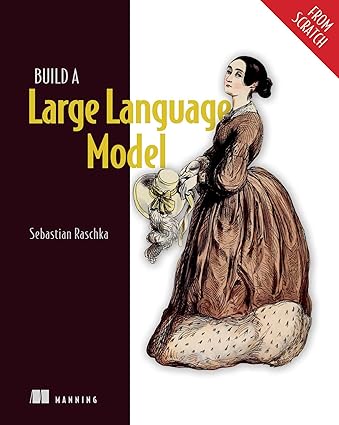Building a Large Language Model from Scratch: A Deep Dive
This white paper explores the key aspects of building a Large Language Model (LLM) from scratch, drawing heavily from the insights provided in Sebastian Raschka's book, "Build a Large Language Model from Scratch" published by Manning Publications.
1. Foundational Concepts
- What are LLMs? LLMs are sophisticated AI models trained on massive amounts of text data. They excel at a wide range of tasks, including:
- Text Generation: Generating human-like text, translating languages, writing different kinds of creative content.
- Question Answering: Answering questions in an informative way, providing summaries, and extracting key information.
- Text Summarization: Condensing long pieces of text into concise summaries.
- Sentiment Analysis: Determining the emotional tone or sentiment expressed in a piece of text.
- Neural Networks: LLMs are built upon neural networks, a type of machine learning model inspired by the human brain. They consist of interconnected layers of artificial neurons that process1 information.
- Transformers: A groundbreaking architecture that revolutionized natural language processing. Transformers leverage self-attention mechanisms, enabling the model to weigh the importance of different parts of the input sequence when generating output.
2. Building an LLM: A Step-by-Step Guide
- Data Preparation:
- Data Collection: Gather a massive dataset of text data. This could include books, articles, code, and other sources.
- Data Cleaning: Clean the data by removing noise, such as HTML tags, special characters, and irrelevant information.
- Data Preprocessing: Tokenize the text (break it down into smaller units like words or subwords), convert it into numerical representations (e.g., using word embeddings), and create training and validation datasets.
- Model Architecture:
- Choose a Transformer Model: Select a suitable Transformer architecture, such as BERT, GPT, or a custom variant.
- Define Model Parameters: Determine the number of layers, hidden units, attention heads, and other hyperparameters.
- Model Training:
- Training Process: Train the model on the prepared dataset using techniques like backpropagation and gradient descent. This is a computationally intensive process that typically requires powerful hardware (GPUs or TPUs).
- Fine-tuning: Fine-tune the pre-trained model on specific tasks, such as question answering or text summarization, using smaller, task-specific datasets.
- Evaluation and Refinement:
- Model Evaluation: Evaluate the performance of the trained model using appropriate metrics (e.g., accuracy, F1-score, perplexity).
- Model Refinement: Iterate on the training process, adjust hyperparameters, and experiment with different architectures to improve model performance.
3. Key Considerations
- Computational Resources: Training large language models requires significant computational power. Access to GPUs or TPUs is crucial.
- Data Quality: The quality of the training data significantly impacts the performance of the LLM. High-quality, diverse, and unbiased data is essential.
- Ethical Considerations:
- Bias: LLMs can reflect biases present in the training data, leading to unfair or discriminatory outcomes.
- Misinformation: LLMs can generate misleading or harmful content.
- Privacy: Ensuring the privacy of sensitive data used for training is crucial.
- Explainability: Understanding how LLMs make decisions is challenging. Research is ongoing to develop methods for interpreting and explaining their behavior.
4. Use Cases of LLMs
- Customer Service:
- Powering chatbots for customer support, providing instant answers to frequently asked questions.
- Automating customer service tasks, such as order tracking and issue resolution.
- Content Creation:
- Generating creative content, such as articles, poems, and stories.
- Assisting in writing tasks, such as drafting emails, summarizing documents, and improving grammar and style.
- Education:
- Personalizing learning experiences by providing customized explanations and exercises.
- Automating grading and providing feedback on student assignments.
- Healthcare:
- Analyzing medical records to identify potential health risks and suggest treatment options.
- Developing new drugs and therapies by analyzing vast amounts of biomedical literature.
- Search:
- Improving search engine results by understanding user queries more effectively and providing more relevant results.
5. Conclusion
Building a large language model from scratch is a challenging but rewarding endeavor. By understanding the fundamental concepts, following a structured approach, and carefully considering the ethical implications, researchers and developers can create powerful LLMs with the potential to revolutionize various aspects of our lives.
References
- Raschka, Sebastian. Build a Large Language Model from Scratch. Manning Publications, 2024.
- Brown, Tom B., et al. "Language Models are Few-Shot Learners." arXiv preprint arXiv:2005.14165 (2020).
- Vaswani, Ashish, et al. "Attention Is All You Need." Advances in Neural Information Processing Systems 30 (2017).
Note: This white paper provides a general overview. The specific details and implementations may vary depending on the chosen architecture, dataset, and training parameters.
This comprehensive overview should provide a strong foundation for understanding the key concepts and challenges involved in building a large language model from scratch. Contact ias-research.com from details.



